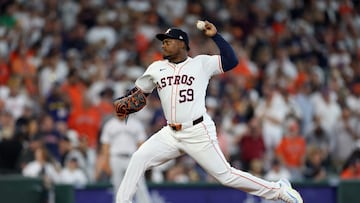MLB
How do catchers relay signals to pitchers? How does PitchCom work?
Baseball has a long history of sign stealing, but Major League Baseball has introduced sincere recently an electronic device to enhance player experience.

Catchers have relayed signs in the MLB to pitchers for over a century through a sequence of finger movements.
But after the Houston Astros’ sign-stealing scandal in 2017 and five years of sign-stealing being in the spotlight, the league has found a way to end it.
It’s called PitchCom.
New technology in the MLB
Invented by John Hankins and Craig Filcetti, PitchCom is an electronic device that transmits pitch signals from the catcher to the pitcher. It was implemented for the 2023 season, and many teams are already embracing the new technology.
PitchCom provides a remote control that hugs backstops’ wrists and a speaker in pitchers’ hats that vocalizes the signals to further protect against sign-stealing. The official website describes the device as a “player-wearable transmitter that allows players on the field to communicate plays to each other without using physical signs or verbal communication.”
Catchers can now press a button on the device that relays an audio signal straight to the pitcher’s hat. Conversely, the pitchers hear something like “high fastball” or “low curveball.”
Other benefits of PitchCom
This new technology also allows players to communicate effectively without the other team having a chance to steal signs like before. It can also be programmed in different languages, a massive plus for many foreign players with communication issues. Additionally, the PitchCom device allows other players, like the shortstop, to listen in on the selected pitch.

Where there is satisfaction, there is criticism
While another benefit of the device is that it is believed to speed up the game, this is also one of its cons. Some players, like Atlanta Braves Travis D’Arnaud, are not fans of the new device because it “rushes the game” as the rapid audio relay from the catcher to the pitcher eliminates any confusion with hand signals.
But while the device might not be everyone’s favorite new thing, it is bringing professional baseball one step closer to combatting a problem long overdue.






